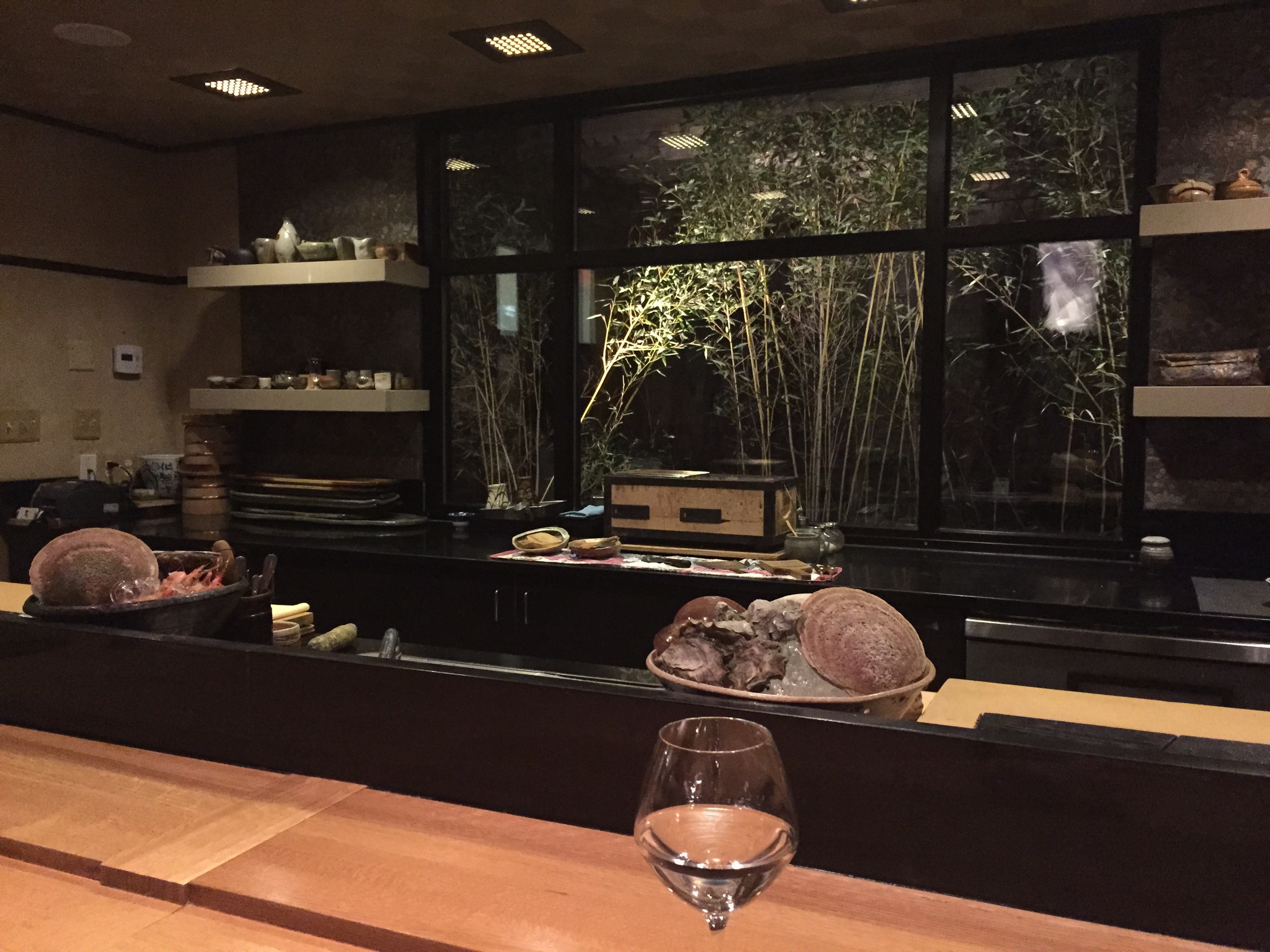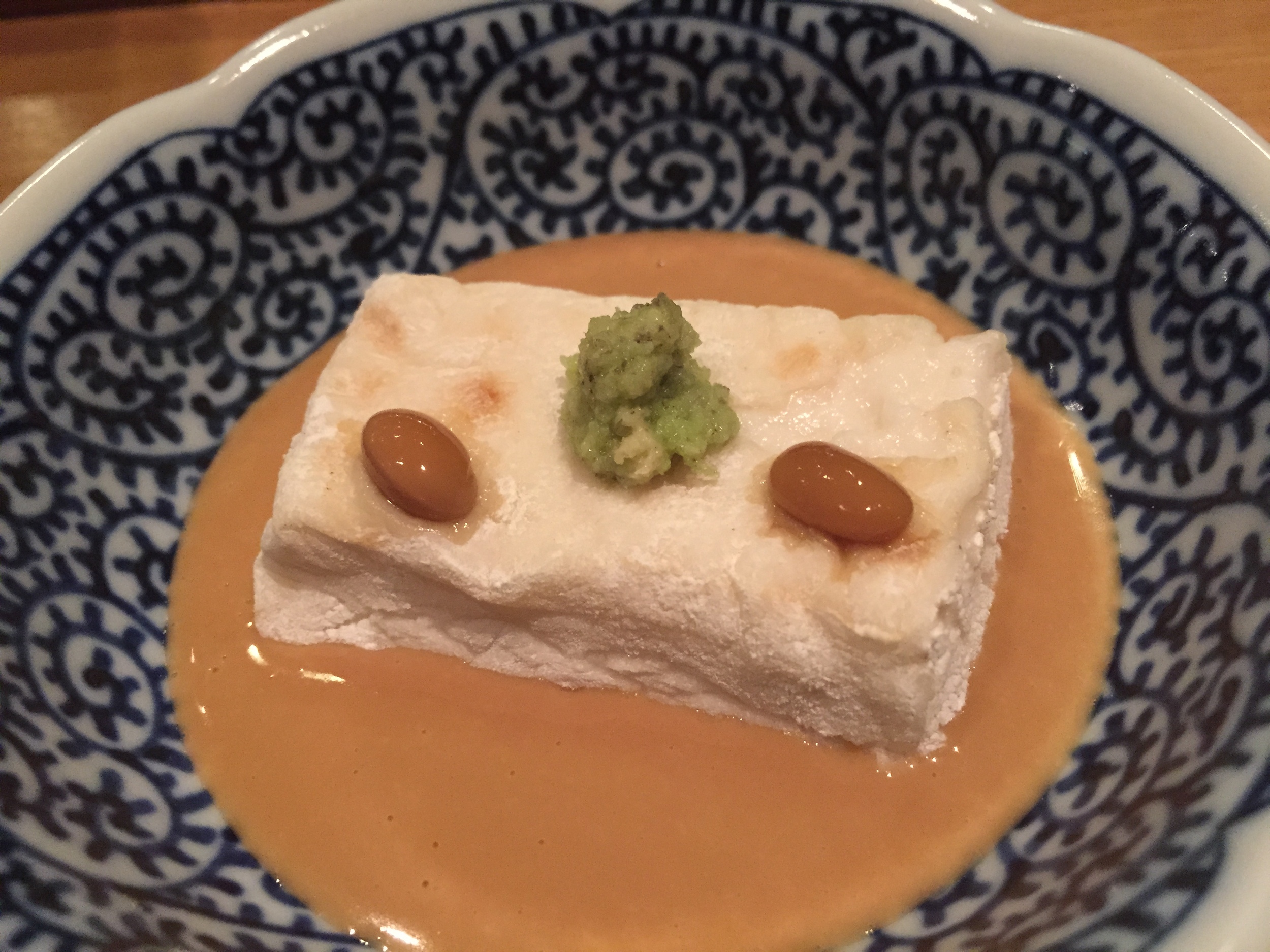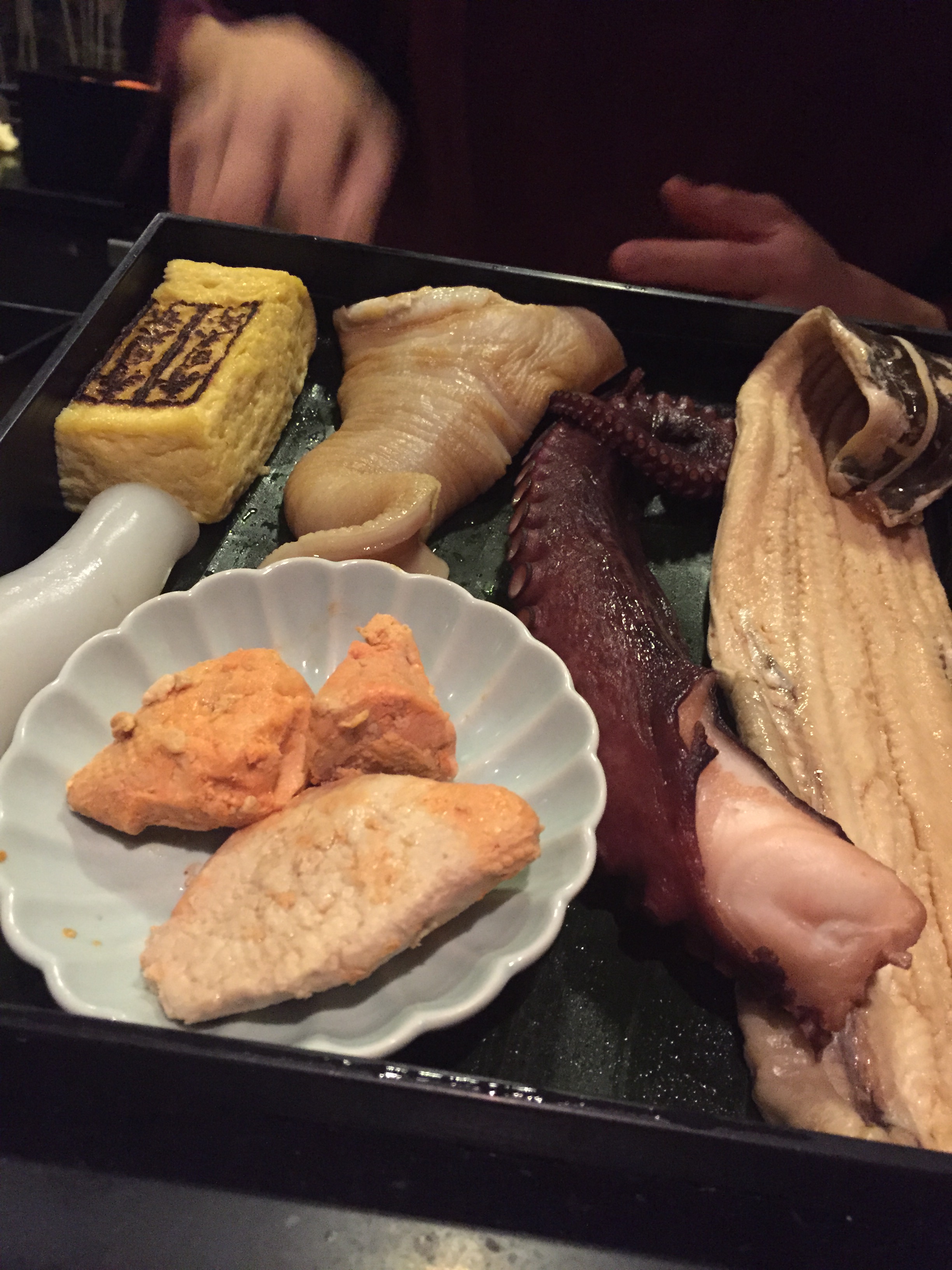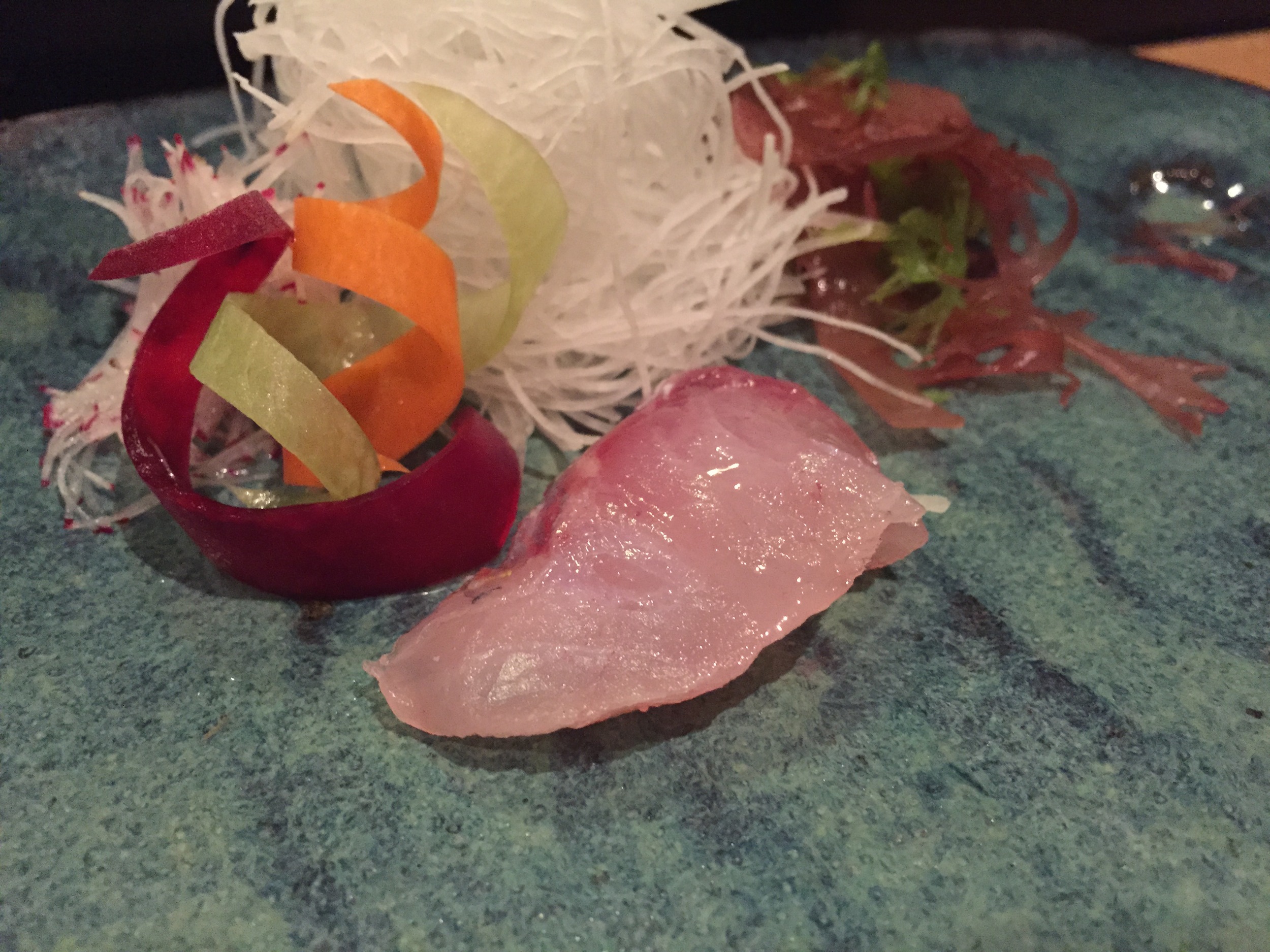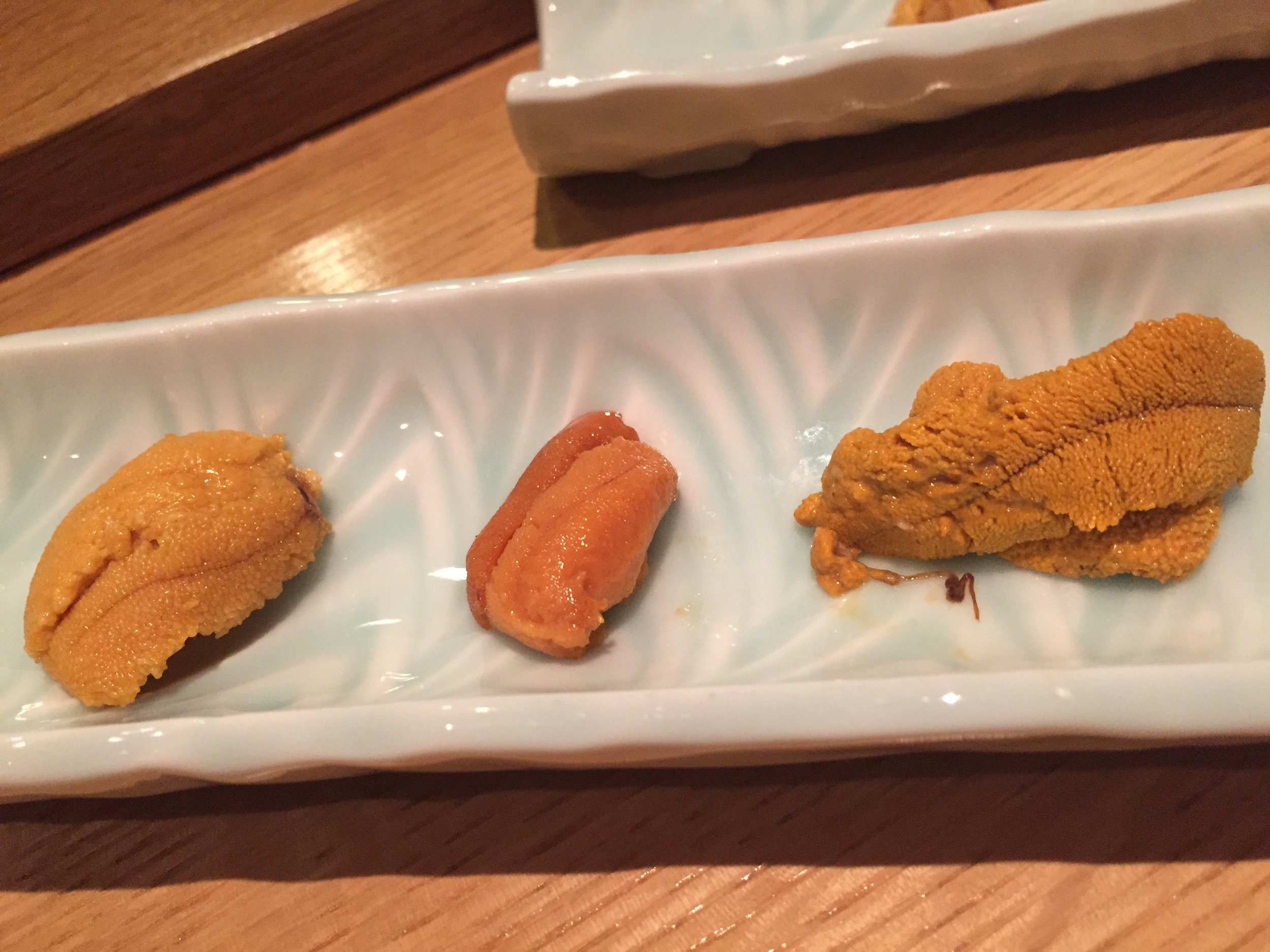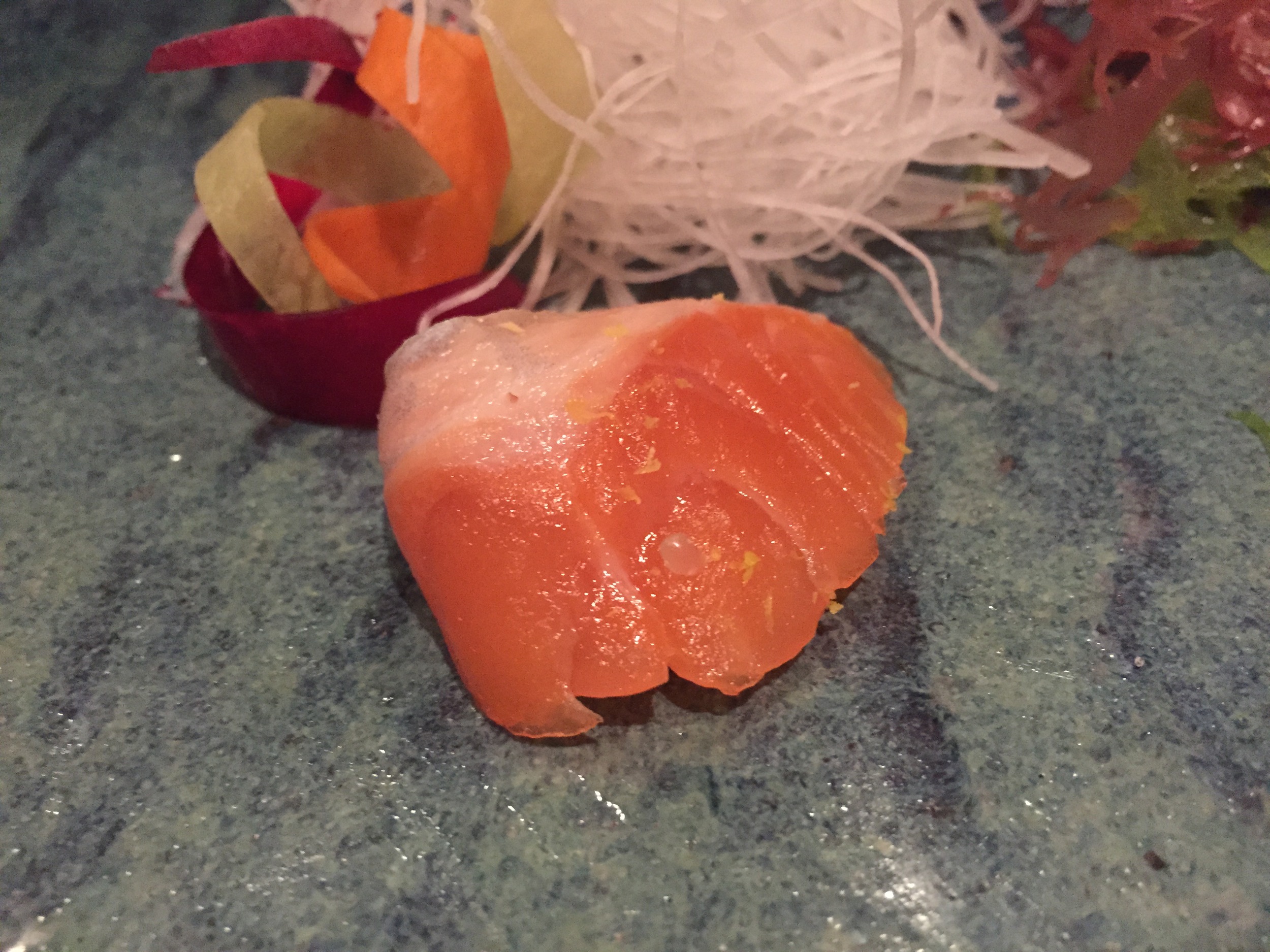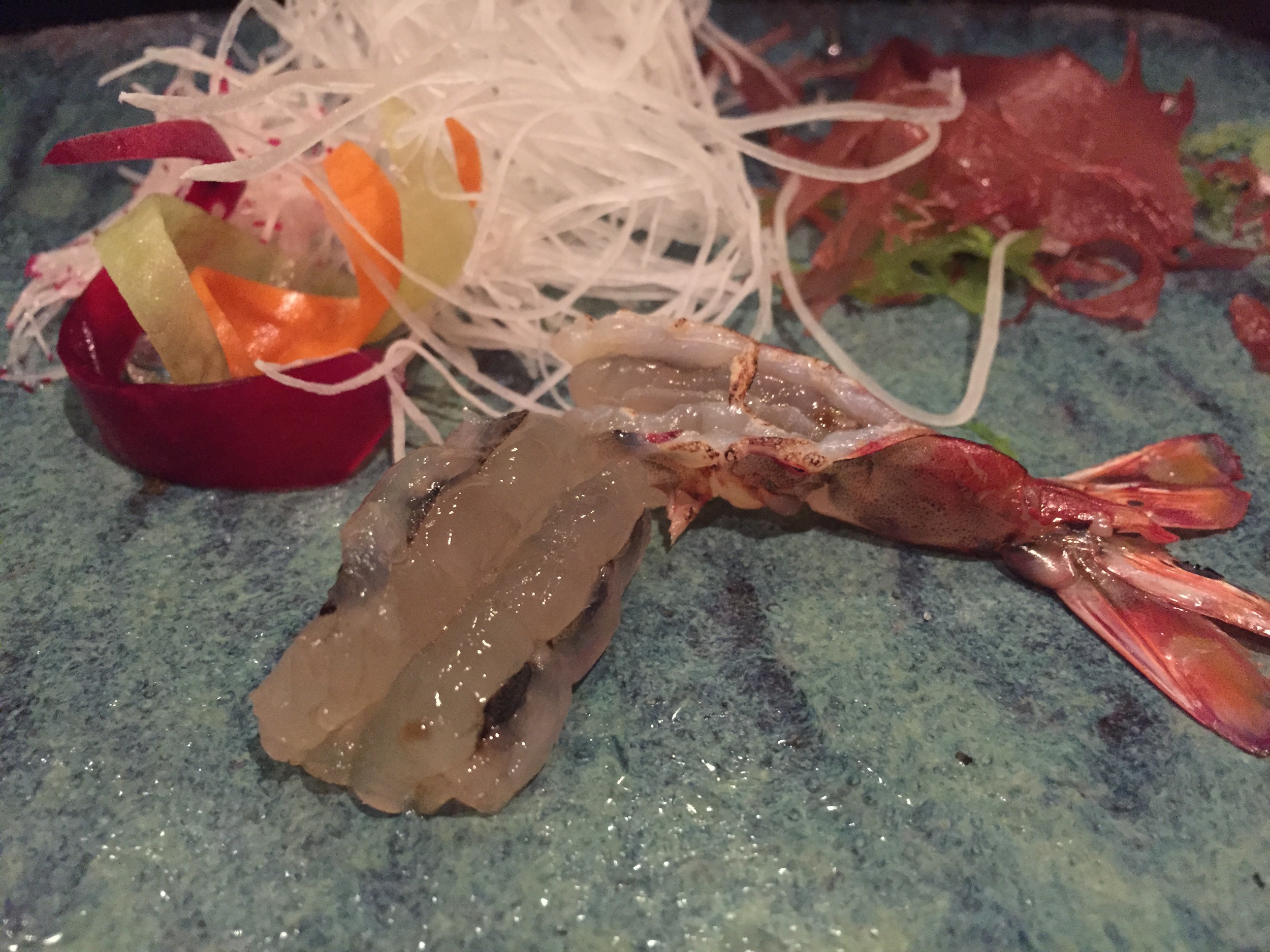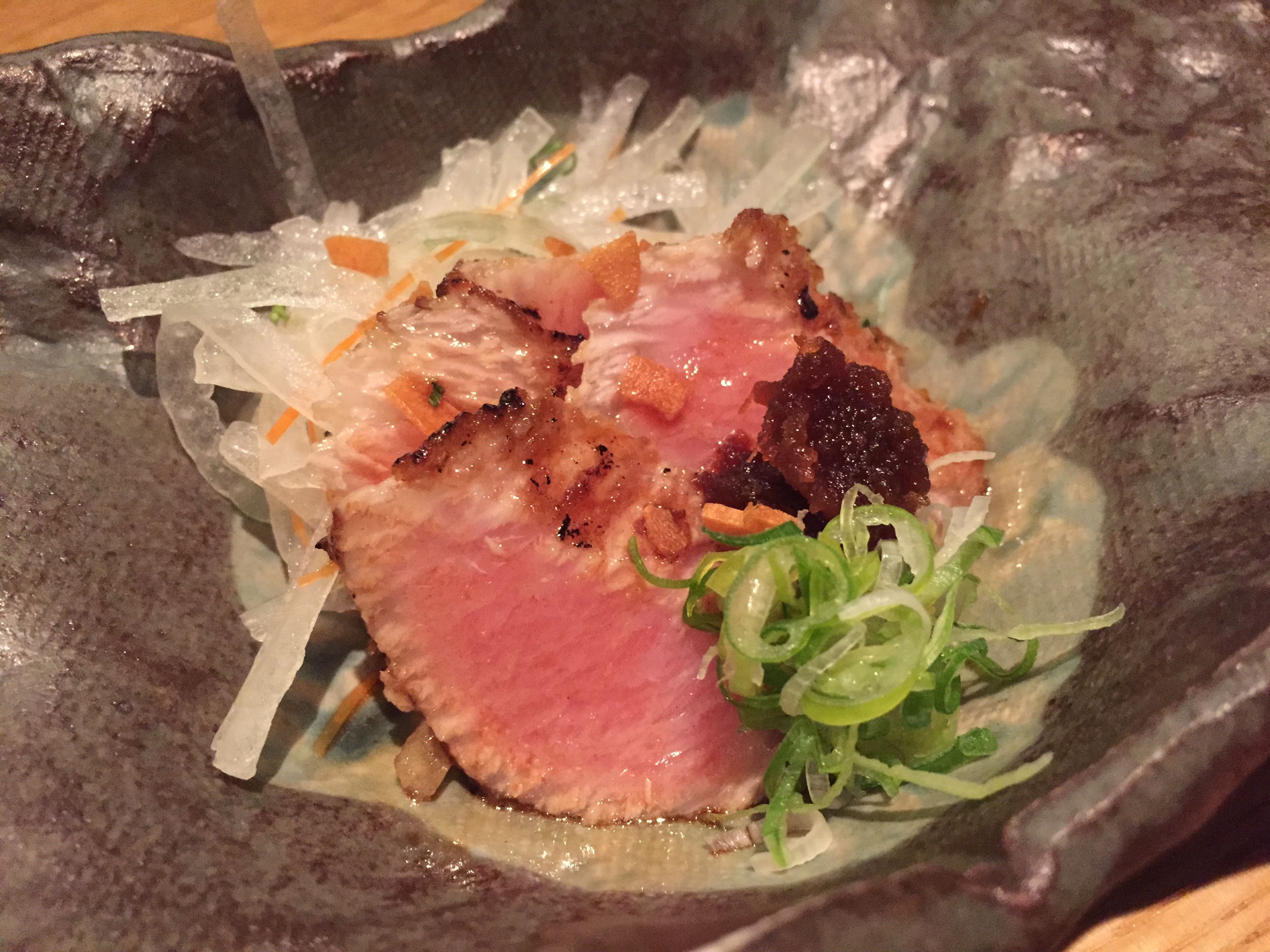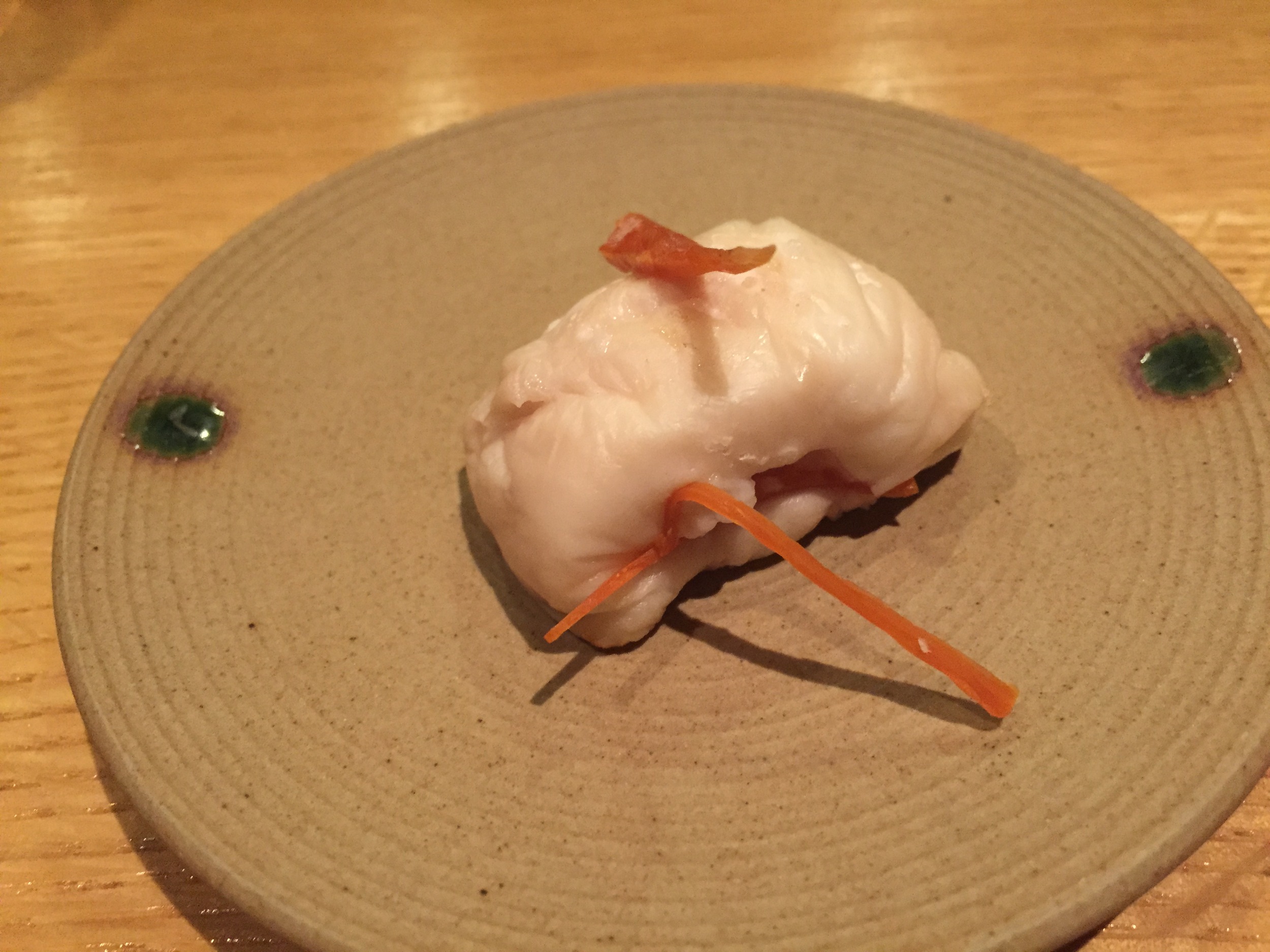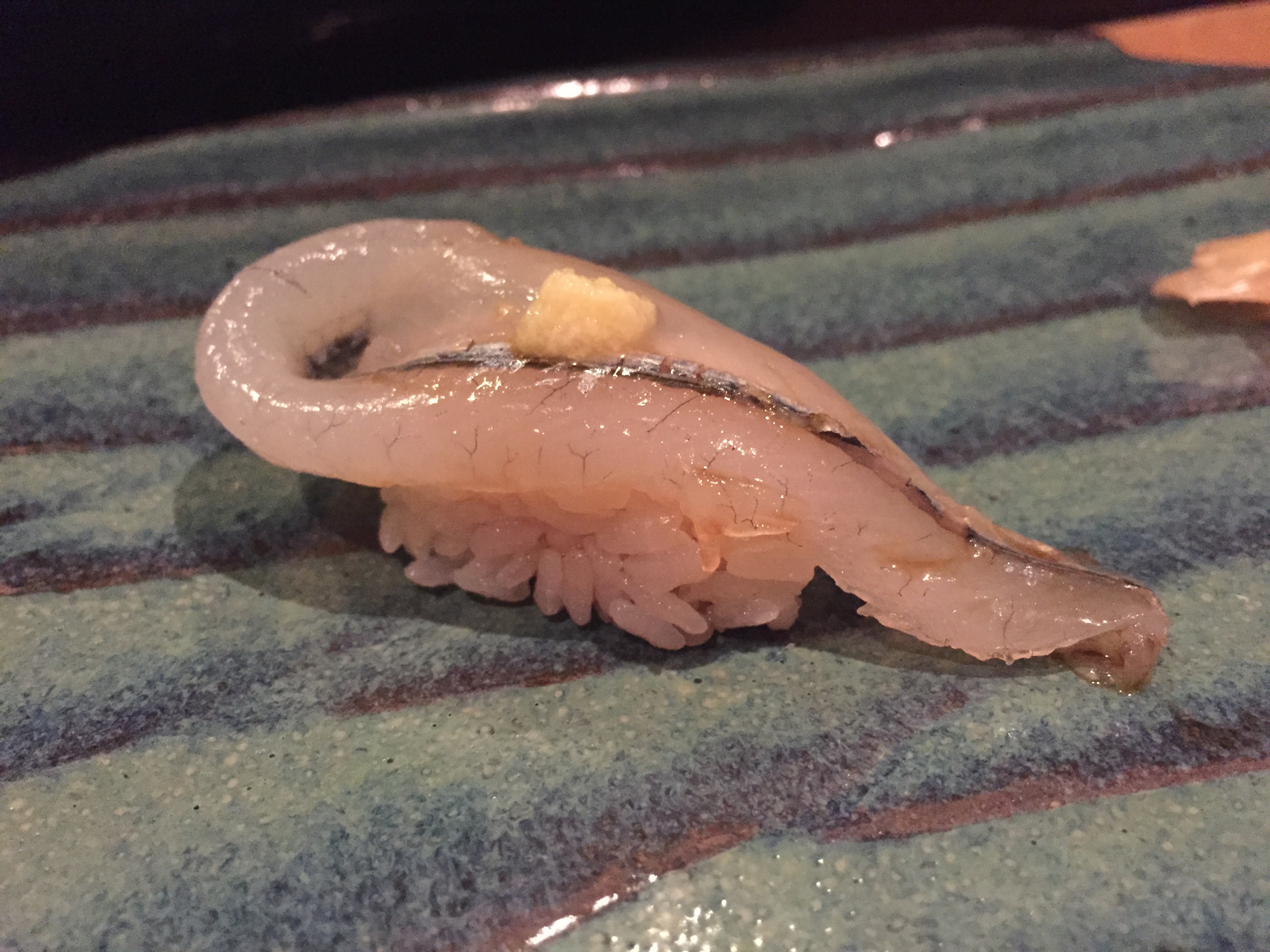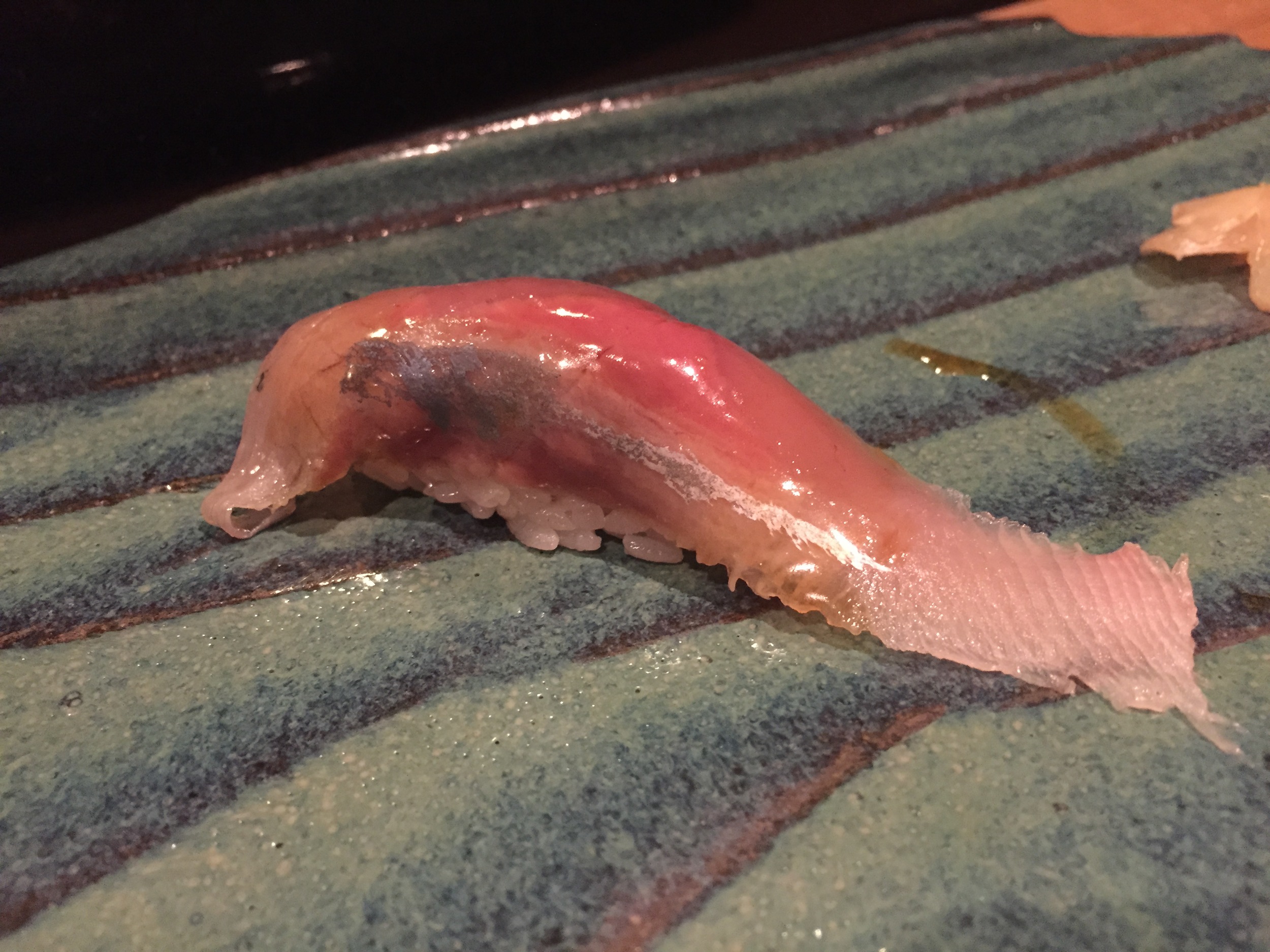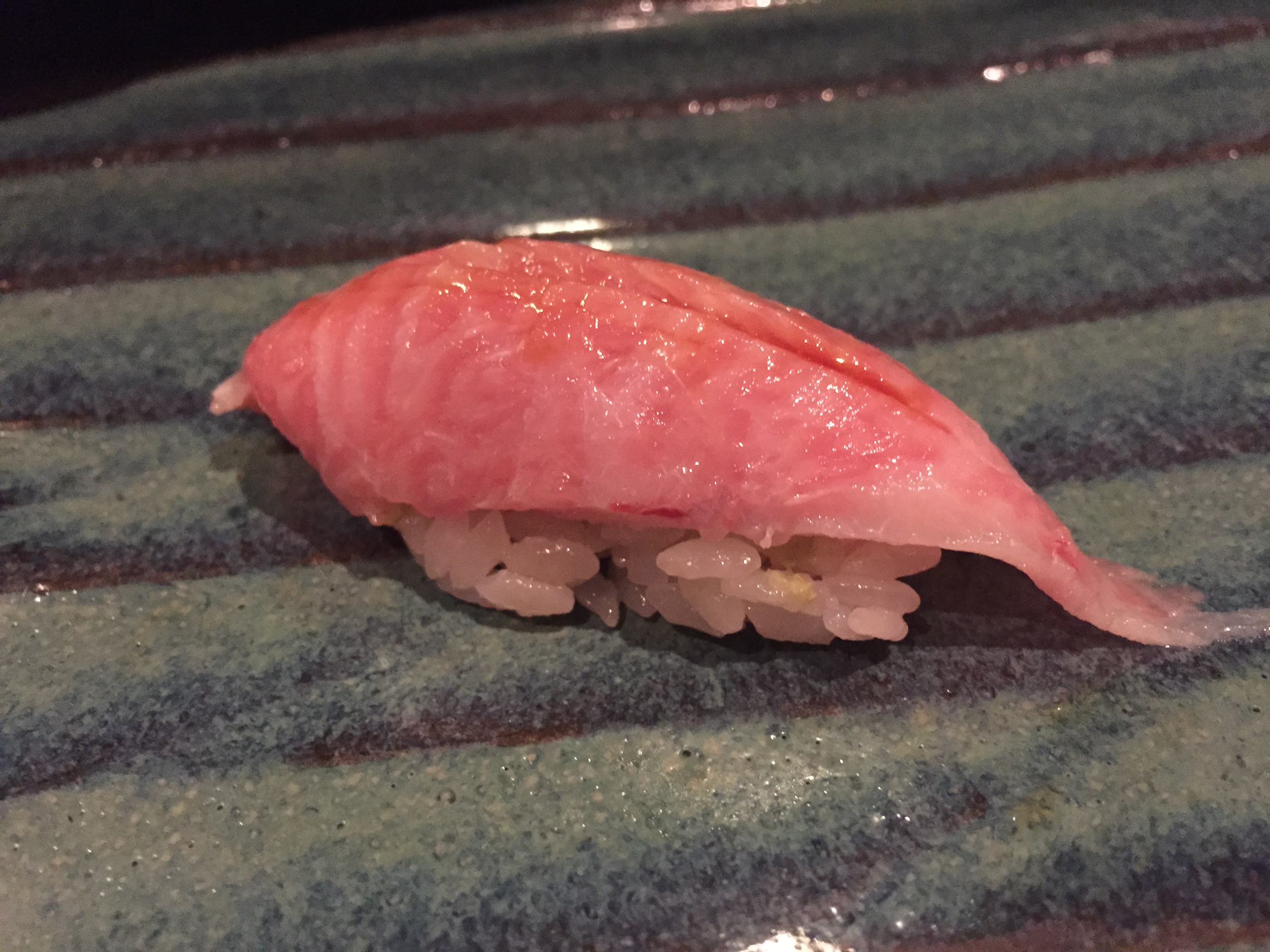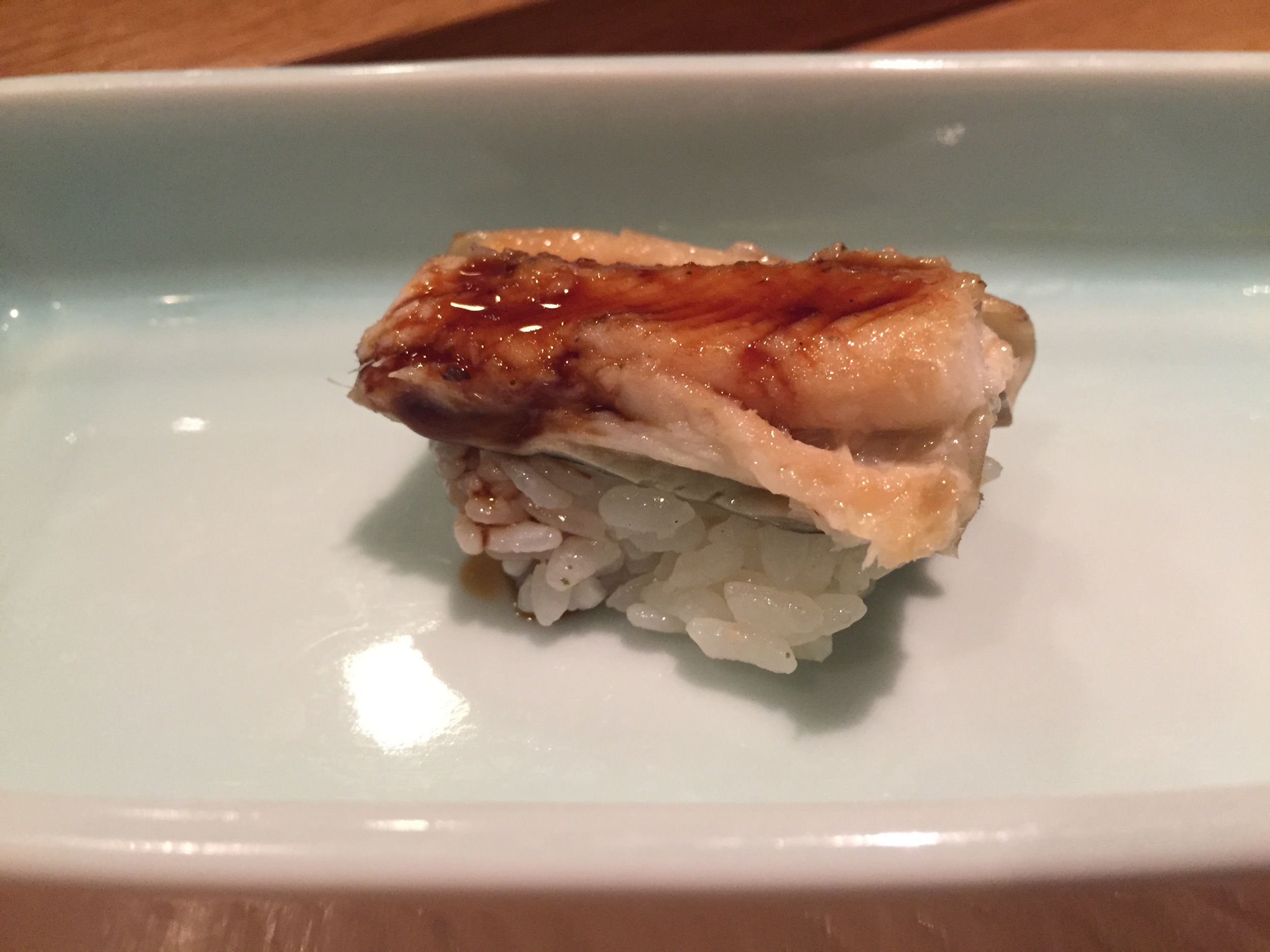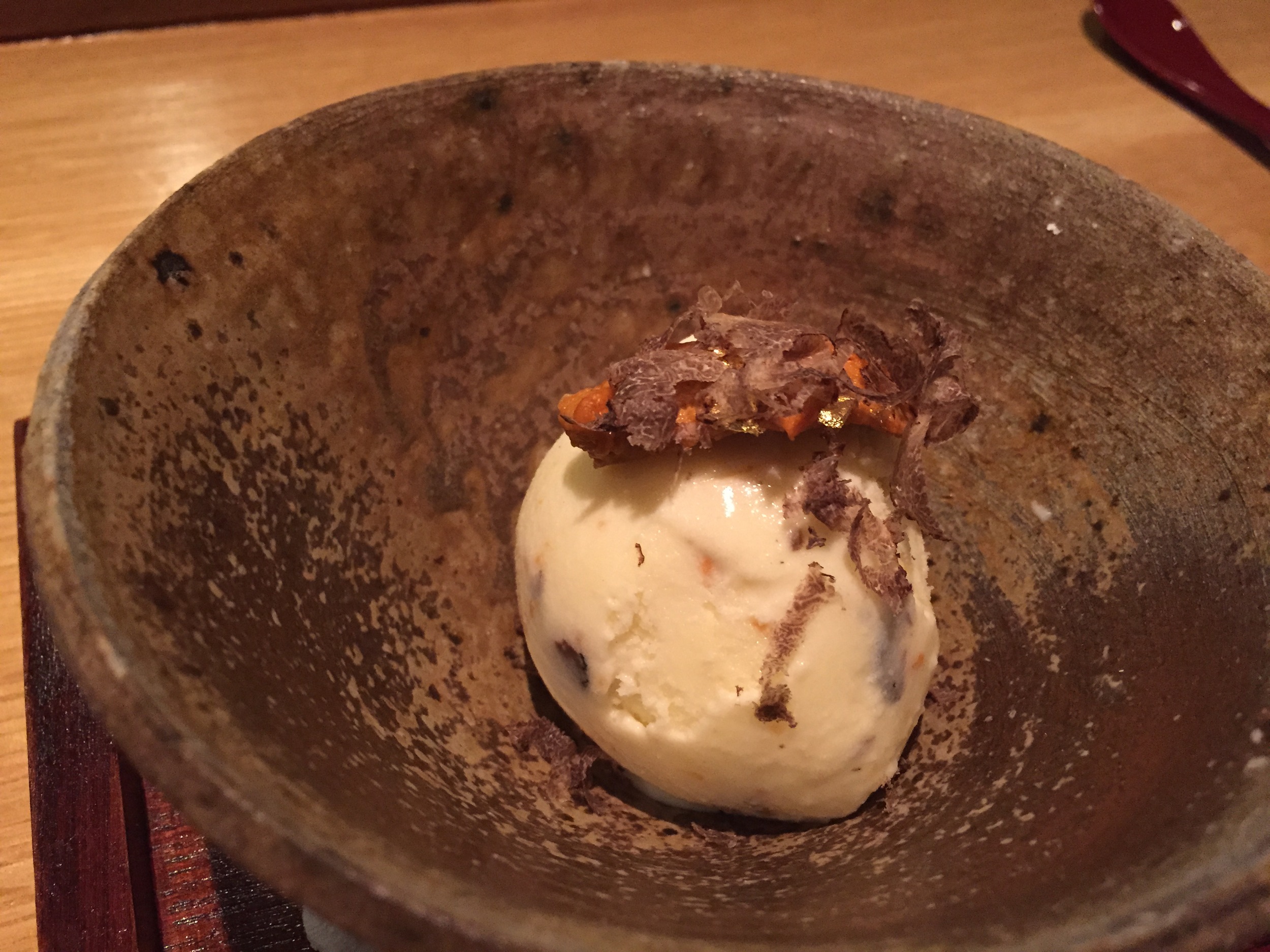- Cost: $140-$240, before drinks, tax, and tip
- Size: 6 seats at counter
- Style: otsumami + sushi omakase
- Reserved: 6 weeks in advance
The timeline of Sushi Taro has in some ways aligned closely with the growing American interest in sushi omakase. In 2009, the 20-year-old neighborhood restaurant underwent a renovation that resulted in the installation of a 6-seat, 1-seating-per-night "omakase" counter. The omakase counter was (and is) meant as a platform for the restaurants' two head chefs, Nobuhiro Yamazaki and Masaya Kitayama, to serve customers as they wish. A wave of press followed this opening, and since then, Sushi Taro seems to surface any time a list is compiled of the "best" sushi restaurants in North America.
This designation is legitimate. I can say without hesitation that Sushi Taro certainly stands alongside (and in some, respects, even above) the best sushiya anywhere in North America. The neta selection is impressive (on the night I visited, around 50 items were available) and of very high quality. The atmosphere - with the backdrop of an indoor bamboo garden that reminded me of Uchitsu in Tokyo - is serene and intimate. I was floored by the availability of uber-rare items like live Japanese kegani and kuruma ebi, and delicacies like fugu shirako and bachiko that require not only significant training and licensing, but also a bevy of supplier connections.
The technique is very traditional and I was impressed by the otsumami. Cubes of goma tofu were grilled over bincho-tan to a marshmallow-like consistency. Japanese ginkgo nuts were stuffed with tiny shrimp balls, coated with rice powder, and lightly fried. Lightly-seared slices of kamatoro were served with ponzu and an addictive housemade garlic paste. A slice of fugu (when served raw, a very neutral-tasting fish) was magnified in flavor by way of a few seconds on a hot stone and a squeeze of yuzu. My only disappointment was a cube of Miyazaki wagyu that was grilled perfectly but diminished by a coating of uni and grated black truffles.
The sashimi portion of the meal was likewise impressive. Raw kuruma ebi (both the tail and head) was lightly grilled over the aforementioned bincho to bring out the sweet shrimp flavor in a way I hadn't experienced before. Chocolate clam (analogous to a cross between akagai and aoyagi) was served alongside its himo. A slice of itoyoridai (threadfin) was tenderized and concentrated in flavor via a salt cure.
If it wasn't for the sushi, I would be inclined to say that Sushi Taro is potentially the best sushiya in America. I found the shari to be fine, but otherwise unremarkable (and for the first several nigiri, it was quite sticky, though this later improved). But the knife skills were not at the highest level. Various nigiri had strips of sinew (otoro), or were cut imprecisely (saba), and the balance of neta-shari was all over the place. A nigiri of sake-steamed hamaguri that would have otherwise been enjoyable was ruined by a piece of shell - an unforgivable mistake. On the whole, the nigiri were good (in particular, house-cured ikura, inada (young yellowtail), akami zuke, and nore sore) but were not at the world-class standards of the ingredients. The fact that the meal tends towards more otsumami and sashimi suggests to me that the chefs know their strength is not with the sushi.
Notably, both of the sushi chefs trained in Kansai, so the sushi is not really edomae-style. This is a interesting change of pace, and worthy of a visit in its own right. I should note that the omakase counter meals start at $140, though my bill was almost double this amount due to my propensity to try a number of exorbitantly expensive items (like the fugu shirako and wagyu). In my estimation, Sushi Taro is a must-visit for anybody seeking the best sushi in America, and I'm not sure there is a comparable restaurant within a 200+ mile radius. Certainly worth a special trip.
